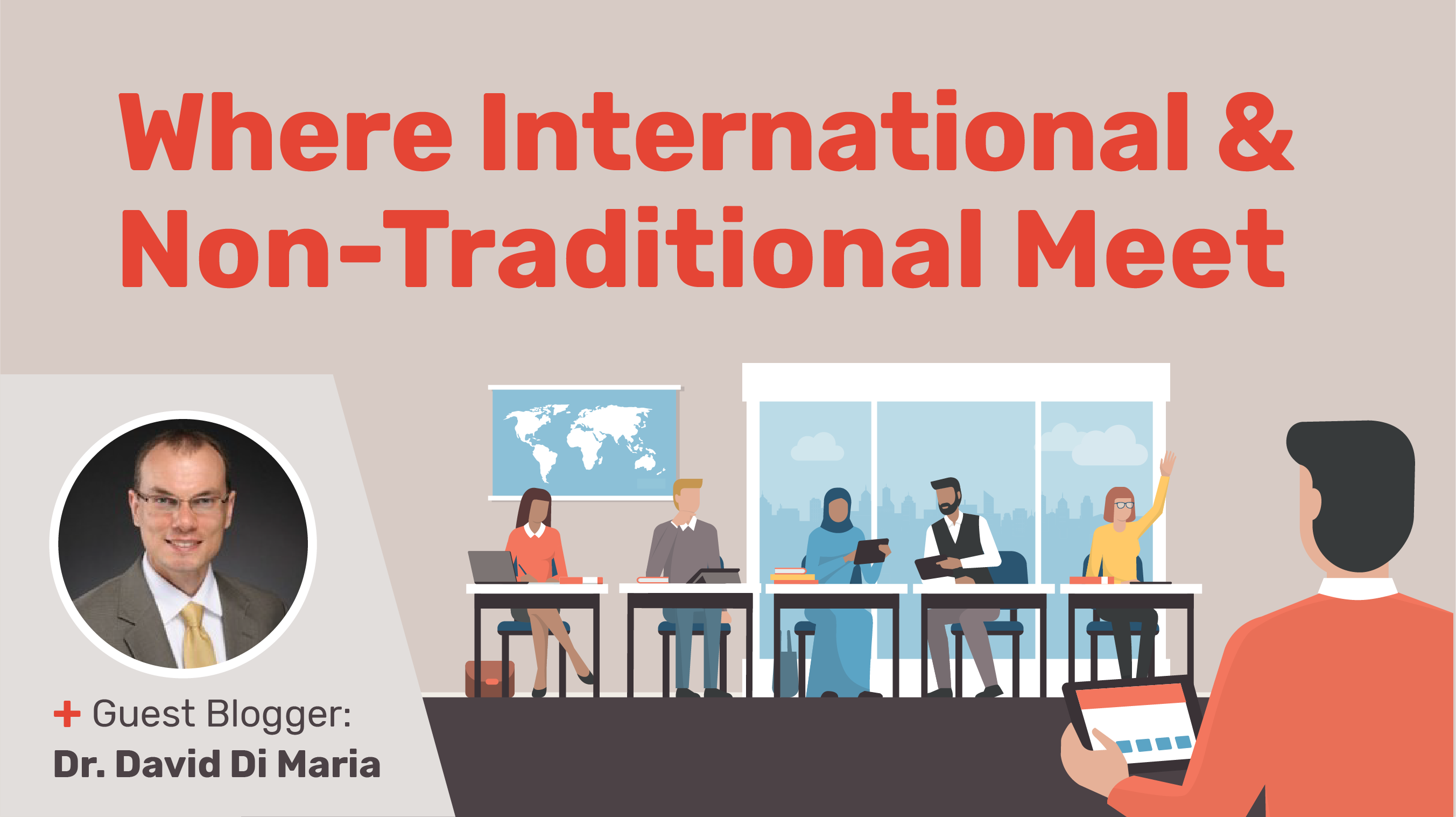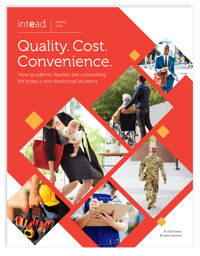
Dr. David L. Di Maria, Associate Vice Provost for International Education, University of Maryland Baltimore County, is a renowned expert on international education. Dr. Di Maria previously served as the President of the American International Recruitment Council (AIRC) and Chair of NAFSA’s International Enrollment Management Knowledge Community. We’re delighted to have him as a guest writer here on the Intead Intelligence blog.
Before you dive into Dr. Di Maria's wisdom, we need to share the opportunity to gain wisdom from one of our other industry's leaders: Karin Fischer, veteran education industry reporter whose stories appear in the Chronicle of Higher Education and the The New York Times will team up with Intead CEO Ben Waxman to explore current political perspectives coming out of China and India.
This post below is adapted from Dr. Di Maria’s recent piece for The EvoLLLution: How to Make International Learning Opportunities More Accessible to Non-Traditional Learners.
It’s simple: non-traditional students are changing the landscape of higher ed in the U.S.
The typical “traditional” college student is 18-to-24-years-old, living on campus, and financially supported by parents. That archetype is fading into history. More and more, students are…
- Embarking on degrees while juggling careers, kids, or parents who they support
- Living off-campus
- Completing their education online
- Taking courses part-time
These students are rapidly becoming the new traditional. And yet, they are too often left out of the global learning community.
How do we fix it?
Like other readers of this blog, I believe in the power of international learning experiences. Studying abroad benefits individual learners, the educational communities to which they travel, and the home communities to which they return. Students grow in their own abilities in so many ways, and those who learn and work alongside these global learners also reap the benefits of their international perspective.
Unfortunately, not everyone has the same level of access to international education. In the U.S., an overwhelming majority of students who participate in study abroad programs are white undergraduate females with no documented disability pursuing academic credit in Europe. More often than not, they are also childless, twenty-something years of age, and attending university full-time.
 As Intead has laid out in their most recent e-book, Quality. Cost. Convenience. How academic leaders are competing for today's "non-traditional" students, the student population is changing—so, you can no longer ignore the need for international programs to cast a wider net.
As Intead has laid out in their most recent e-book, Quality. Cost. Convenience. How academic leaders are competing for today's "non-traditional" students, the student population is changing—so, you can no longer ignore the need for international programs to cast a wider net.
What are the barriers to study abroad?
There are many factors that can discourage students from studying abroad. It is only by taking a critical look at these barriers that we can expand the reach of global education.
Cost
While many “traditional” students have their parents’ financial resources to support them in their effort to see the world, the expense of studying abroad may feel like an extra luxury to those students who are footing the bill themselves. These students need to critically assess the return on investment of international education to determine if the cost is justifiable.
Universities can help make study abroad more affordable in several ways. Check out initiatives like Generation Study Abroad and 100k Strong in the Americas, which both offer funding to increase academic mobility. Can your institution offer a stipend for students who teach English at a partner institution abroad? Create shorter, less expensive program options? Better communicate how international travel translates to increased earnings potential in students’ particular course of study?
Time
Even students who can financially afford to study abroad may find it logistically difficult to do so. With caretaking responsibilities or careers to maintain, several months outside of the country is simply not an option for many non-traditional learners. Again, intensive and brief study abroad programs (think week-long, immersive options) can help these students benefit from study abroad.
Comfort
Non-traditional students are acutely aware that they are different from the majority of students studying abroad—and that reality can be discouraging.
One way this discomfort often surfaces is around housing during the trip. Consider whether there are ways to make the study abroad experience better-suited to the needs of non-traditional students. Is it possible for spouses or children to join the student? Are private accommodations available for older students who may feel uncomfortable housing with younger classmates? Are homestays with similarly-aged hosts an option?
Another great way to assuage non-traditional students’ concerns is to have other non-traditional students who have successfully completed study abroad host a few “office hours” drop-in sessions. Non-traditional students who are considering making the leap, but uncertain whether the experience will feel comfortable, can stop in to talk to students who have been there and done that. Consider hosting these sessions outside of the study abroad office in spaces frequented by adult learners, commuters and veterans.
Marketing
Think about how your institution markets your study abroad options. Read the language on your website and take a look at the images that accompany them. Would non-traditional students see themselves in these images? Does the language used reflect the fact that some students may not be teens venturing outside the U.S. for the first time on their own?
When studying abroad is not an option, you can bring the world to your campus.
It’s possible to bring international learning into your curriculum even without sending students to study abroad. Internationalization at Home is a strategy that facilitates cross-cultural connection. This means both bringing an international perspective to the curriculum and making use of technology to connect students to a global community.
If your institution has partnerships with universities in other parts of the world, make the most of them. Encourage your faculty to develop opportunities for students to collaborate across institutions—for instance, by assigning group projects to multi-national, multi-lingual teams.
International education benefits everyone. Let’s commit to making it accessible to a wider range of students.
To see Dr. Di Maria’s recent piece for The EvoLLLution: How to Make International Learning Opportunities More Accessible to Non-Traditional Learners, click here.


